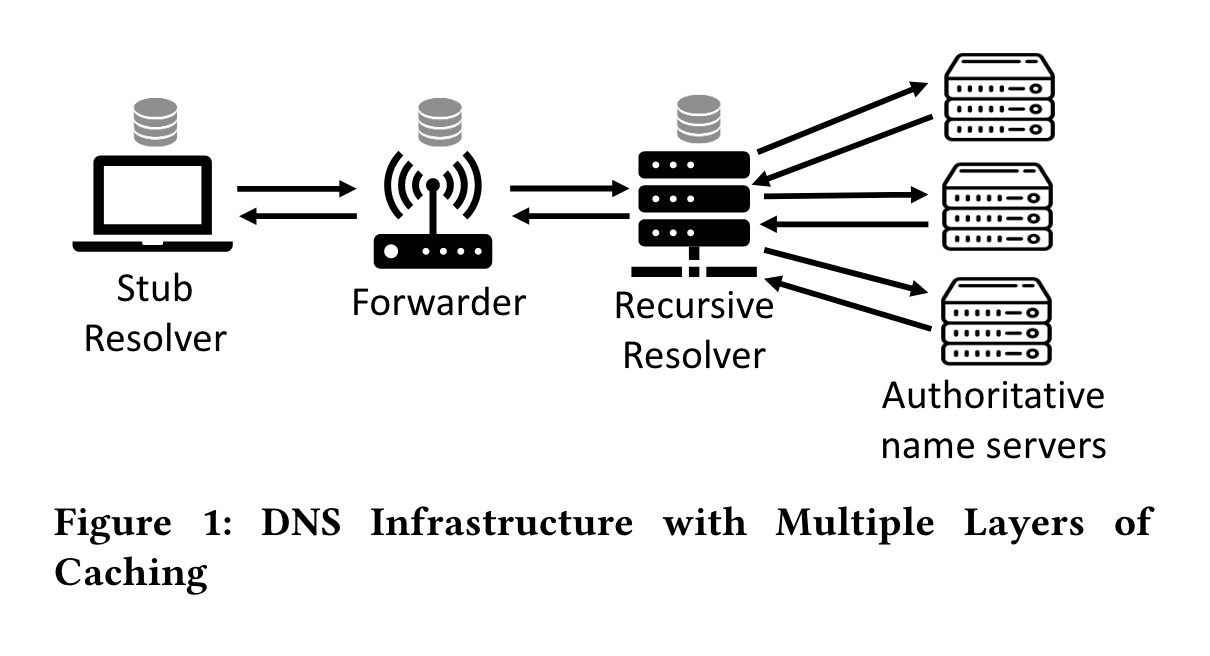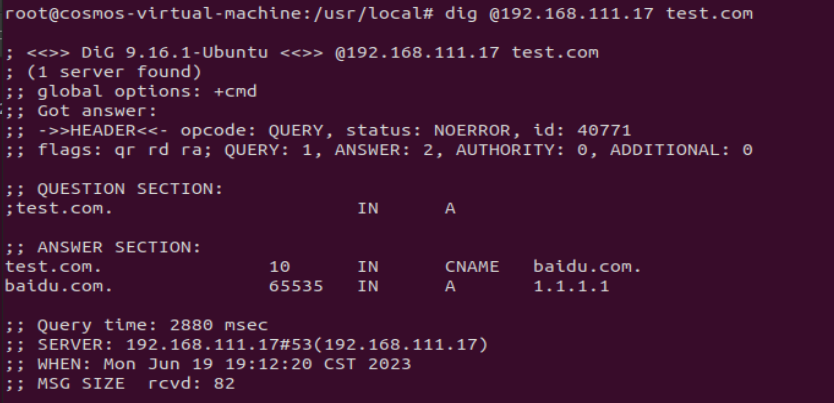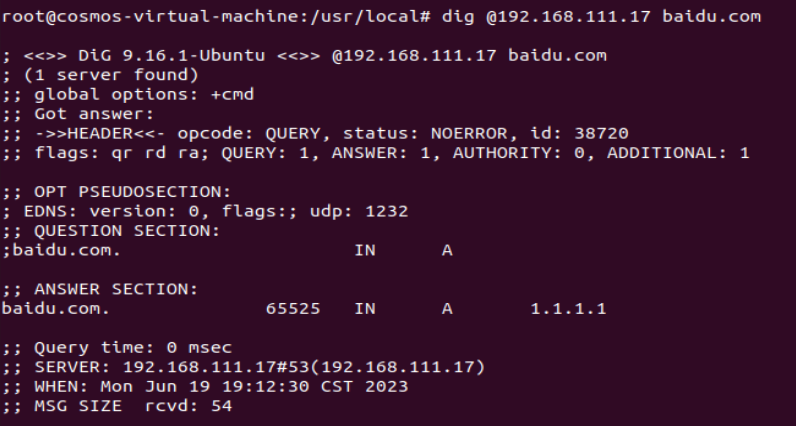Paper address: DNS Cache Poisoning Attack Reloaded: Revolutions with Side Channels
Background Knowledge
DNS Infrastructure

Paper Overview

Experiment Setup
I use three virtual machines to set the environment:
┌──────────────────┐
│ │
DNS query │ dns_forwarder │ ubuntu18+dnsmasq(linux 4.15)
│ │
└──────────────────┘
| 192.168.111.17 |
| |
| |
┌──────────────────┐
│ │
DNS query │ dns_resolver │ ubuntu20+dnsmasq
│ │
└──────────────────┘
| 192.168.111.14 |
| |
| |
┌──────────────────────────────┐
│ │
DNS query │ auth_name_server │ ubuntu20+bind9(test.com)
│ │
└──────────────────────────────┘
| 192.168.111.15 |
dns_forwarder
For the kernel version, we need to download the vulnerable one, see the patch
https://git.kernel.org/pub/scm/linux/kernel/git/torvalds/linux.git/commit/?id=b38e7819cae946e2edf869e604af1e65a5d241c5 We can refer to this article to replace the kernel version:
https://juejin.cn/post/6991642139306229791
Here I set the kernel 4.15.0-76-gerneric
We can refer to this article to replace the kernel version:
https://juejin.cn/post/6991642139306229791
Here I set the kernel 4.15.0-76-gerneric
dnsmasq.conf
port=53
listen-address=0.0.0.0
bind-interfaces
no-resolv
server=192.168.111.14
dns_resolver
dnsmasq.conf
port=53
listen-address=0.0.0.0
bind-interfaces
cache-size=1000
server=192.168.111.15
auth_name_server
named.conf.options
options {
directory "/var/cache/bind";
allow-query { any; };
dnssec-validation no;
listen-on-v6 { any; };
};
named.conf.default-zones
zone "test.com" {
type master;
file "/etc/bind/zones/db.test.com";
};
db.test.com
;
; BIND data file for test.com.
;
$TTL 4
@ IN SOA test.com. root.test.com. (
2 ; Serial
4 ; Refresh
4 ; Retry
4 ; Expire
4 ) ; Negative Cache TTL
;
; A records
@ IN NS localhost.
@ IN A 183.169.1.12
@ IN AAAA 2183:169:1::12
testing.test.com. IN A 183.169.1.12
testing.test.com. IN AAAA 2183:169:1::12
Attack Reproduction
exp: https://github.com/seclab-ucr/SADDNS/tree/master/saddns_c
ICMP side channel attack verification
In order to verify that CVE-2020-25705 in the current version of the kernel, we execute nc -luk 60096 on the Forwarder, and then use udpscan to guess the port and succed.

SADDNS Reproduction
Configure attack parameters

Close the auth_name_server and run it
 It can be found that
It can be found that baidu.com has been successfully polluted as 1.1.1.1

Conclusion
The SADDNS uses ICMP side channel to break the limitation of source port randomization, and can launch attacks on caches at all levels of modern DNS. After reproducing this attack, I have a deeper understanding of the DNS architecture and its security.
References:
https://github.com/imranur-rahman/dns-cache-poisoning-attack-reloaded
https://knqyf263.hatenablog.com/entry/2020/11/19/200900